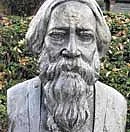

The British Foreign Office has cleverly claimed that local laws prohibit museums from removing items from their collection. Britain is also in a running battle with the Greek government for the return of the Elgin Marbles.
All over the British Museum, close to where the marbles are displayed, there are posters stating how the intent of the display is to highlight the beauty of the marbles. There is an understated implication that the Elgin Marbles look better in their present habitat than from where they were resurrected.
A British friend candidly remarked when I was touring the museums in London, “If Britain’s galleries and museums were to return what they had wrested from their colonies, they would have precious little left to display!”
Also in the news recently has been the sale of a set of dozen paintings called the Elmhirst Collection. These paintings were recently sold by Sothebys on behalf of the Dartington Hall Estate, a south-Devon based charitable organisation. It was the innovative programmes undertaken by this charity that prompted Tagore to make several trips to Dartington where he painted these canvases.
He gifted these 71 years ago to the Dartington Hall Trust then run by Elmhirst and his wife, Dorothy. Prime Minister Manmohan Singh had indicated that the government would examine a proposal to purchase the paintings but the plan fell through on account of legal strictures under the Antiquities Act that permit only paintings that are 100 years old and above to be eligible for the heritage tag that could have helped the government of India to intervene. Perhaps, the Antiquities Act should be amended but that calls for another story.
But Britain’s India connection goes much beyond galleries, museums and private collections. Indians are prominent everywhere. Madame Tussauds is one place where one gets to see a lot of India; both waxen and real! From the lifelike recreation of Mahatma Gandhi to the not-so realistic portrayals of Indira Gandhi, Sachin Tendulkar, Amitabh Bachchan and Aishwarya to droves of Indians waiting to take pictures with these icons.
Just up the road from Tussauds is the address familiar to Sherlock Holmes fans, 221 B, Baker Street. The whole place is a marvellous recreation of the era created by Sir Arthur Conan Doyle. And to think that 221 B, Baker Street has an Indian connection! The accent of Gracy, the cordial owner sitting at the cash counter had an Anglo-Indian lilt and she made no attempt to hide it. Her honesty was disarming as was her excitement at meeting an Indian. She offered us a discount on the Sherlock Holmes’ hat-shaped tobacco press that we picked up, and even gifted us Holmes pens.
Gracy had married a British citizen and moved to England more than 50 years ago. She started this place, when she was able to buy a home at this famous address. As a young lady in Kolkata, she had also played a small role opposite the renowned theatre and film personality, the late Utpal Dutt. She played Henrietta to Utpal Dutt’s Michael Madhusudan Dutt.
The nostalgic longing for India was palpable when Gracy repeated these Bengali lines from the play, “Tumi cholegele amader ki hobe?” The lines basically mean, “What will happen to us, if you leave?’’
Glimpses of India were also visible at Trafalgar Square amongst a group of Khalistan supporters who had gathered there to remember the anniversary of the storming of the Golden Temple and to shout slogans.
A chance encounter with a Sikh taxi driver gave me the opportunity to pose some questions about issues of assimilation. He had sold his farmlands in Punjab and moved to England and now his wife and children are used to the English lifestyle. One very telling observation that came from him was about the dignity of labour.
He did not feel discriminated against, despite being an Asian cabbie in England and seemed convinced that he would have been looked down upon had he pursued this job in India.
The comment made me wonder if India has imbibed class-consciousness from its colonial masters and then started discriminating against its own people. More slices of India awaited us. And there were more surprises.
In the backyard of one of the houses in Stratford-upon-Avon sits a statue of India’s Nobel Laureate, Rabindranath Tagore. Bengalis believe that Tagore’s range of writing and the emotions that he has touched upon far exceed that of the Bard of Avon. Tagore’s only disadvantage was that he wrote in Bengali whilst Shakespeare had the advantage of a more universal language, made popular because of Britain’s colonial legacy.
In an effort to connect the two great writers, the Vishwa Bharati University of Shantiniketan had gifted the bust to Stratford and there it stands in all its glory, surprising visitors from India, who least expect to see Tagore at Stratford!
Undoubtedly, the greatest thrill for an Indian is to see the Kohinoor diamond displayed in a heavily-guarded area inside the Tower of London. Visitors taken past the Crown Jewels and the jewel in the crown, on a ramp, are sure to be dazzled by the spectacle.
It is hard not to feel a twinge of regret for all the wealth of India that has been wrested away. I summon up the courage to tell one of the guards in charge that the Kohinoor must come back to its original owners. And he replies, “We are taking good care of it for you!”
This smug reply might annoy many of us but when you look at painstaking measures and fastidious security in the British museums and galleries, you really wonder whether it is not true that they are doing a mighty good job of preserving these treasures, as compared to our country’s negligent attitude towards her national treasures and heritage buildings!
Melanie P Kumar
